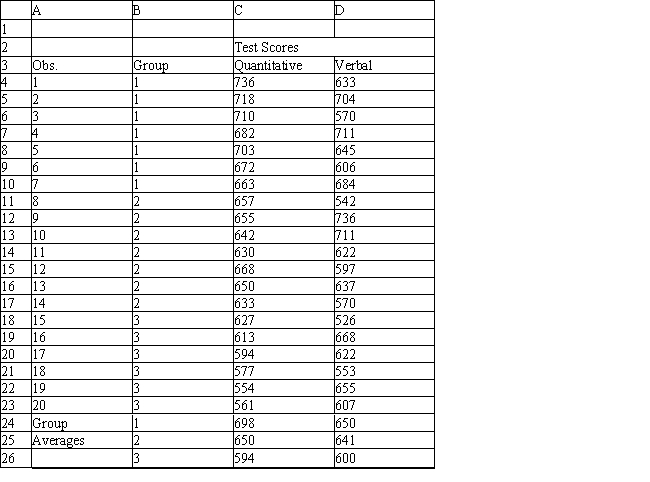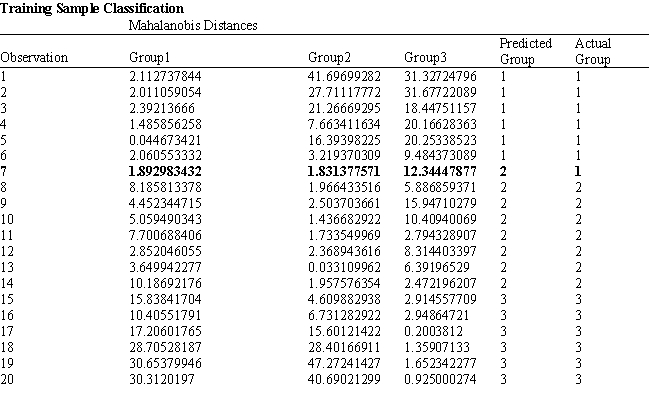Exhibit 10.2
The following questions are based on the problem description and the output below.
A college admissions officer wants to evaluate graduate school applicants based on their GMAT scores, verbal and quantitative. Students are classified as either successful (Group 1) , marginally successful (Group 2) or not-successful (Group 3) in their graduate studies. The officer has data on 20 current students, 7 successful (Group 1) , 6 marginally successful (Group 2) and 7 not successful (Group 3) . 




-Refer to Exhibit 10.2. Based on the analysis presented in the spreadsheet, what percentage of the observations were correctly classified?
Definitions:
International Test
Examinations administered across various countries to assess and compare educational systems or cognitive skills on a global scale, such as PISA or TIMSS.
Reading
The process of understanding written text through the interpretation of written or printed symbols.
Voucher School
A school that accepts vouchers as payment for tuition, where vouchers are provided by a government to parents for schooling at any school, public or private.
Tuition Charges
Fees charged by educational institutions for instruction and other services.
Q13: Customers arrive at a store randomly, following
Q30: Goal programming (GP) is typically<br>A) a minimization
Q43: Assume you have chosen to use all
Q43: What is a weakness of manual what-if
Q69: Which of the following formulas is a
Q70: The longest path through a network is
Q74: MINIMAX solutions to multi-objective linear programming (MOLP)
Q81: Refer to Exhibit 11.4. What formula should
Q82: The regression approach can be used in
Q108: The _ in a decision problem represent